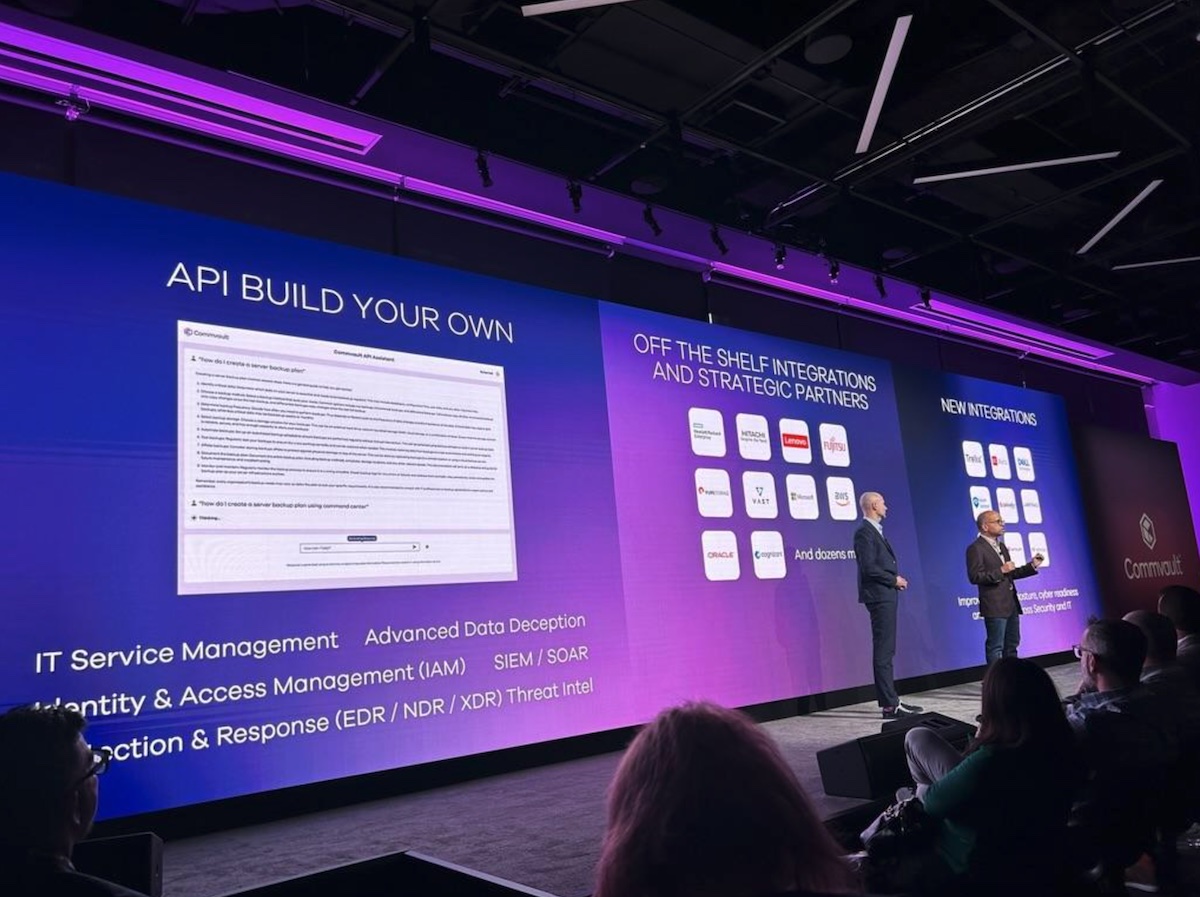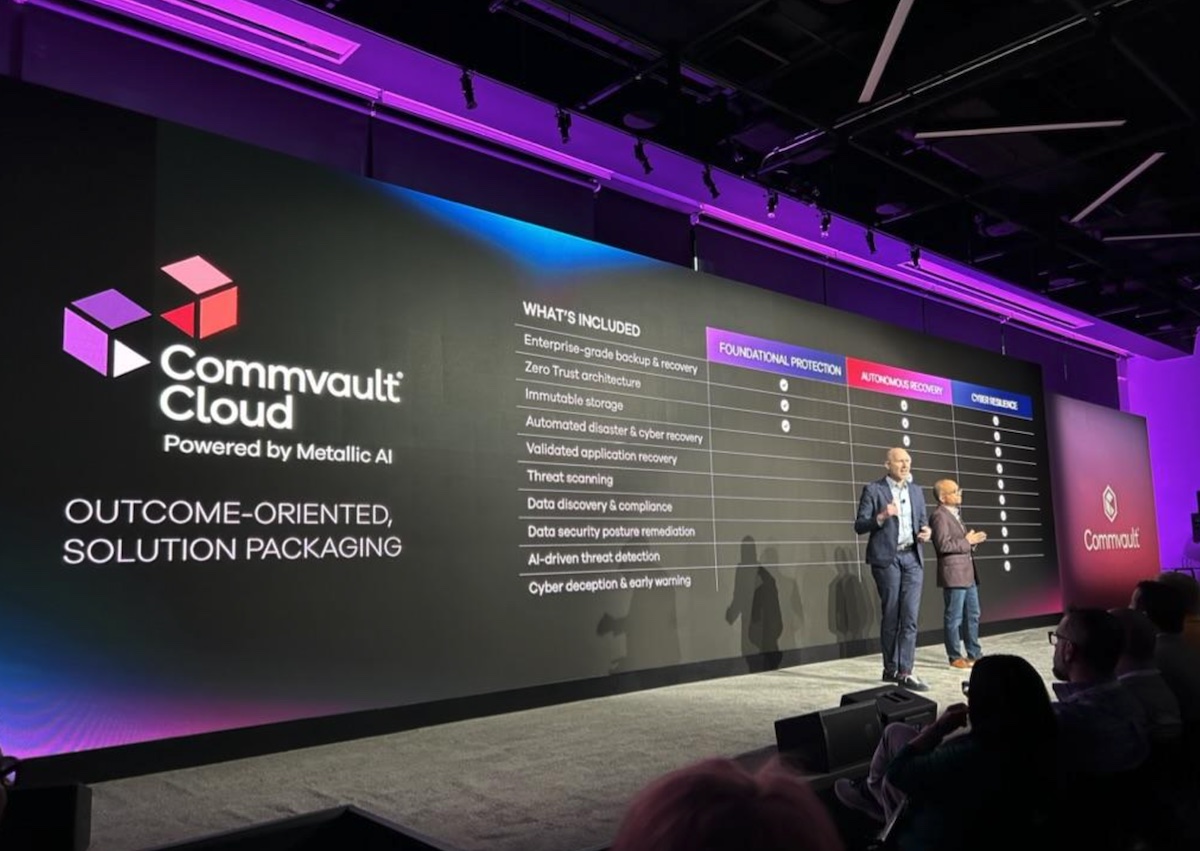Commvault Cloud – A Closer Look
Ransomware has proven to be an unrelenting challenge. If you have tried booking a room at the MGM in the last couple of months, you’ll likely know why. You see, ransomware is not aimed just at the security gaps and blindspots, but at the mitigation strategy as well. When the primary threat goes after the protection mechanism itself, how does one design for resilience?
New Worries Require a New Approach
Distributed systems, applications and data are proliferating at an unbelievable speed. The number of risks are growing hot at their heels. Technology is the business of reducing these risks, and that’s the way Commvault addresses this challenge.
An ideal security workflow looks something like this. Security teams find the risky workloads, they protect and isolate, sandbox the workloads, evaluate the removal strategy, and safely remove risks. It may be pretty simple to look at, but it’s really not.
Inside the New Commvault Cloud
At Commvault Shift, Commvault made the exciting announcement of their new SaaS-delivered platform. Commvault has been a leader in data protection and resiliency software for some time. With this new product, they are aiming to hold onto that momentum.
The foundation of Commvault Cloud is made up of three core layers – control plane, data plane, and storage plane. Each layer provides a set of unique features and capabilities that helps tackle the challenges facing modern and legacy workloads.
The ethos of the platform is:
- Application-awareness to build a true understanding of the workload patterns and risks
- Safe storage of data in an application-agnostic manner, while using standard protocols
- Portability by remaining storage-agnostic in how they store and manage data
The use of encryption at source, immutable and agnostic storage methods, and self-protected, re-generating index and metadata, make for an optimum multi-pronged approach. This entails using recovery as a protection while also being able to safely migrate because the source is preserved in a safe state across the underlying storage platforms. Migration may not seem like a primary use case, but multi-cloud recovery is already a hot topic among CIOs, and rightly so.
Introducing Arlie
AI as a tool for analysis and investigation is a game-changer. I usually dread that phrase, but it is apt in this case.

Context-sensitive help and the ability to add additional intelligence are already hugely valuable features. Being able to ask questions about the systems in plain language is what is going to truly set this apart.
Generative AI can help improve user experience, but it’s merits go much further than just usability. The same set of exciting AI tools extend into the security lifecycle including detection, isolation, notification, and remediation. The platform continues to gain rich knowledge over time as the models learn from the workloads without having to send sensitive data where it shouldn’t be. CISOs everywhere will breathe a sigh of relief for that.
Partnerships and Platform API Consistency
Commvault Cloud is ready to roll with a lot of deep integrations. These are familiar products and vendors organizations likely already have in their environment.

Adding to this, Commvault smartly designed a unified API for Commvault Cloud making integration and extensibility easy from Day 1. This opens door for developing third-party integrations and solutions for partners. There were already some impressive names on the list at the launch, and likely many more to come.

Clean Room in the Cloud
Commvault has partnered with Microsoft for a very interesting solution set that makes recovering to a clean room much easier. Up until now, organizations needed to have safe networks, remote access, immutable images, and a lot of tricks up their sleeves to avoid exposing risky workloads and data to the production network.
Clean room recovery in Commvault Cloud will recover application workloads to Microsoft Azure in order to define a safe recovery location for investigation and remediation. The process generates a new clean room on-demand, and allows users to recover safely to that location to test recovery.
Using clean room recovery that is application-aware but stored in a storage and application-agnostic manner is a double win. Users get the flexibility of a dedicated and safe recovery location without needing proprietary hardware or software.
Cloudburst Recovery
What if one could do recovery without infrastructure? This is perhaps one of the biggest value prop to be able to send the recovery to a new location without bearing massive costs of having mirrored infrastructure. It is like extending the recovery environment to an on-demand datacenter, thanks to public cloud accessibility.
Do Not Confuse Recovery with Resiliency
So many companies and people get caught up in the semantics with good reason. Recovery is a part of a resiliency plan, but alone, it is not enough. Resilience comes from a full lifecycle approach that includes discovery, classification, remediation, and validation. This is where the intelligence in the new Commvault Cloud platform comes together beautifully.

The Cost of Not Being Prepared
No matter which direction an organization thinks it needs to shift, it needs to understand the cost of preparation, and more importantly, that of not being prepared. Questions like whether it can safely do business without some of the existing systems, if the data will create a legal or compliance risk, the regulatory requirements of protecting data and systems, and the regularity of testing recovery have impacts across the board from technologists to business leaders to CISOs, security professionals, and more.
A final bonus is the alignment of outcome-oriented packaging. Aligning requirements to the Commvault solution set will make it much easier for organizations to maximize their value and scale as needed.

Commvault Cloud in Conclusion
If there were any key takeaways from this event, it would be that attacks are inevitiable, and with tactics evolving constantly, organizations need to be resilient and ready for anything. The Commvault Cloud platform is designed to be intuitive and flexible. With add-ons like Arlie, it’s like having a smart assistant that knows IT workloads inside and out. The move towards seamless integration with familiar tech ecosystems, and the clever use of Clean Room Recovery and Cloudburst Recovery, shows Commvault’s innovation at it’s finest.
Commvault Cloud marks a new era in not just recovering data, but building an environment in which resilience is part of the DNA. The platform brings smart features to the forefront, transforming the way companies gear up for cyber incidents. It’s a reminder that the true cost lies in being underprepared, and Commvault’s strategy is to make sure businesses are not just bouncing back, but bouncing forward. Their focus on outcome-oriented solutions means businesses can focus on growth, while being confident in their defense systems.
Learn more about Commvault Cloud and Commvault Shift 2023 on Commvault’s website and keep reading here at Gestalt IT for more coverage.









